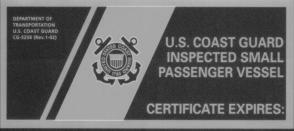


In 1988, After the popularity of multiple passenger flights utilizing the Gondola. Parasail canopy manufacturers modified the riser support
straps with an additional set of D-rings to attach two parasailor’s (one in front of the other) While the concept worked, safety soon became an
issue from flight deck injuries on landing to numerous fatalities by drowning in emergency waters during high winds and rough sea conditions




With a serious of injuries and deaths being linked to the double (inline) harness, manufacturers re-introduced a modified tow bar based on
McCullohs 1971 and 1974 design. The new and improved tow bar system allowed operators to connect multiple parasailors wearing a harness
passenger support side-by-side similar to the Gondola. The tow bar aka "Tandem Bar" became popular with operators who wanted to fly
multiple parasailors without investing into a larger parasail vessel and paying royalties associated with the patented Gondola. Both Harness
systems are inherently dangerous emergency water landings.







In 1989, Mark McCulloh introduced a new wide-body Skyrider Gondolas that could be customized to carry up to four (4) parasailors. The first
customized Skyriders were operated to Guam and Cancun, Mexico



GUAM
90’s Photo of Shaquill O’Neil... and sports agent taken
a ride on the Skyrider Gondola at AquaWorld in
Cancun, Mexico.

In late 1989, Mark McCulloh designed and tested the first Emergency Drogue Deflation System “EDDS” for operators using the body harness
passenger support system. The EDSS was based on the same principal of a sea anchor wind and sea conditions deteriorate can slow a disabled
vessel. The EDDS allows the para-sailor to manually deploy a mini-parchute device after a towline separation during an emergency water
landing in high winds. When deployed, the EDDS (attached the to riser lines) interrupts the parasails ability to remain inflated. Based on
numerous test flights over several months, It was determined that the EDDS system posed a inherent risk to the parasailor and could lead to a
serious accident or catastrophic failure of the main canopy and was abandon.

Conclusions after 87 Test Flights
-required intense parasailor training
-creates an duty for parasailors and crew
-numerous manual deployment errors
-unpredictable in rough water deployment
-increased risk of parasailor entanglement while in the water
-premature launch during flight/catastrophic failure of canopy
-unreliable results once in the water
* Based on the test results, the EDDE project was abandon


Welcome to the
Parasail Safety Council Website

The worlds premiere source for parasail information


In 1989, Mark McCulloh built and delivered the first US Coast Guard Inspected Winchboat using simple stability rules



Parasail Safety Council
Main Office The Clayton & McCulloh Office Building 1065 Maitland Center Commons Blvd. Maitland, FL 32751 Telephone : (321-236-1522 Email: mark@parasail.org © 1998-2022 Mark McCulloh - All Rights Reserved
General Disclaimer: This website is provided “as is” without any representations or warranties, express or
implied. Mark McCulloh makes no representations or warranties in relation to this website or the
information and materials provided on this website. Without prejudice to the generality of the foregoing
paragraph, Mark McCulloh does not warrant that: a) this website will be constantly available, or available
at all; or b) the information on this website is complete, true, accurate or non-misleading. Nothing on this
website constitutes, or is meant to constitute, advice of any kind. Limitations of liability: Mark McCulloh
will not be liable to you (whether under the law of contract, the law of torts or otherwise) in relation to the
contents of, or use of, or otherwise in connection with, this website: a) to the extent that the website is
provided free-of-charge, for any direct loss; b)for any indirect, special or consequential loss; or c) for any
business losses, loss of revenue, income, profits or anticipated savings, loss of contracts or business
relationships, loss of reputation or goodwill, or loss or corruption of information or data. These
limitations of liability apply even if Mark McCulloh has been expressly advised of the potential loss. By
using this website, you agree that the exclusions and limitations of liability set out in this website
disclaimer are reasonable. If you do not think they are reasonable, you must not use this website











































